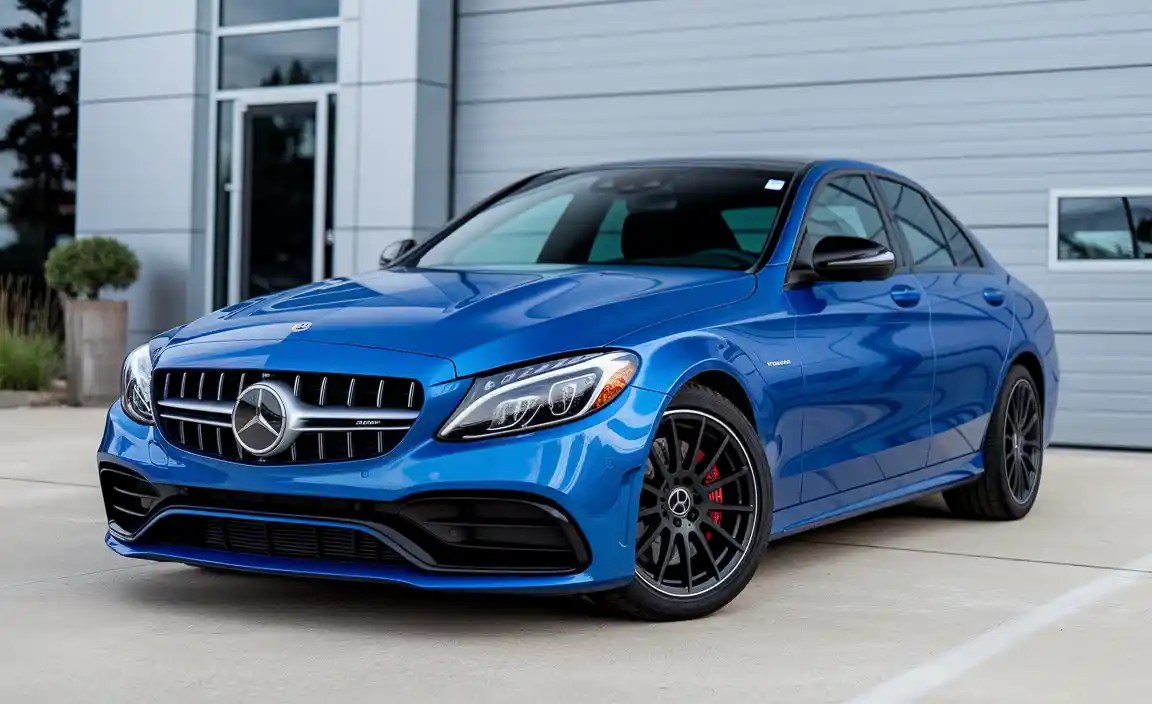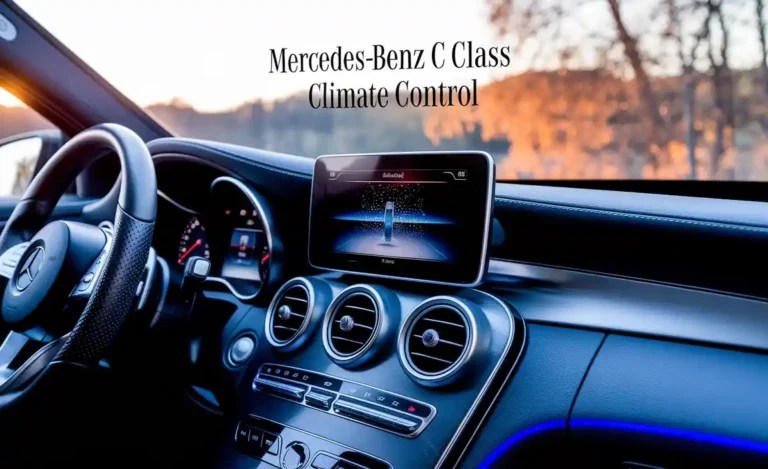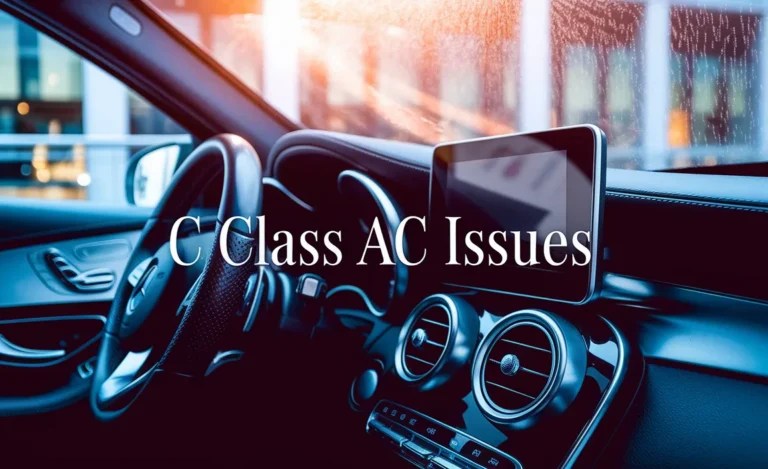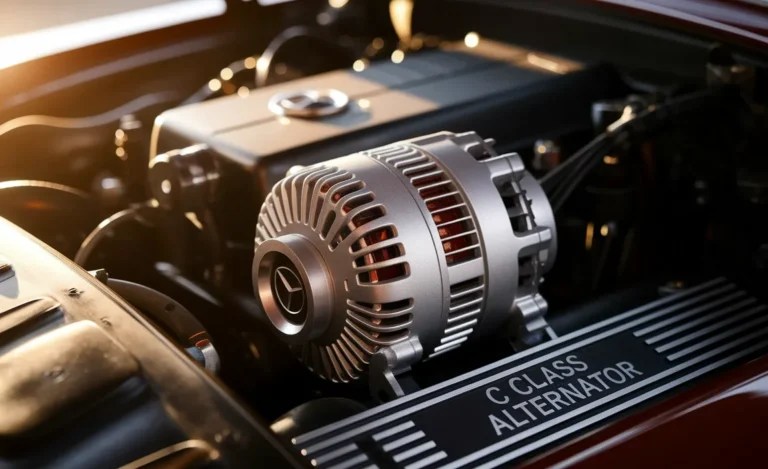Mercedes-Benz C Class Carbon Fiber Parts: The Ultimate Luxury Upgrade
Transform your Mercedes-Benz C-Class with genuine carbon fiber parts to enhance its sporty aesthetics, reduce weight, and elevate its luxurious appeal. This guide explains the benefits, types of parts available, and what to consider for a seamless upgrade. You’ll discover how carbon fiber elevates your C-Class from a premium sedan to a statement of refined performance.
The Mercedes-Benz C-Class is renowned for its blend of luxury, performance, and sophisticated design. Yet, for enthusiasts seeking that extra edge, the desire to personalize and enhance their vehicle is strong. One of the most sought-after upgrades for any luxury car, especially a C-Class, is the addition of carbon fiber parts. These aren’t just aesthetic tweaks; they represent a commitment to lightweight performance and cutting-edge engineering.
If you’ve admired the sleek, sporty look of carbon fiber on high-performance vehicles and wondered how to bring that to your own C-Class, you’re in the right place. This guide will demystify the world of C Class carbon fiber parts, explaining their advantages, the various components you can upgrade, and how to make informed choices for a truly premium transformation.

What is Carbon Fiber and Why is it Coveted in Automotive Design?
Carbon fiber is a remarkable material composed of extremely thin strands of carbon atoms woven together. These strands are then bound by a resin to form a strong, lightweight composite. Its unique properties have made it a favorite in aerospace, racing, and high-performance automotive applications for decades.

The appeal lies in its exceptional strength-to-weight ratio, meaning it’s incredibly strong yet significantly lighter than traditional materials like steel or aluminum. For the automotive industry, especially for a discerning marque like Mercedes-Benz, carbon fiber offers several compelling advantages:
Weight Reduction: Less weight means better acceleration, improved handling, and enhanced fuel efficiency. This is fundamental to performance driving.
Exceptional Strength: Despite its lightness, carbon fiber is incredibly robust, offering excellent durability and resistance to deformation.
Aesthetic Appeal: The distinctive woven pattern of carbon fiber has a sophisticated, high-tech look that instantly signals performance and luxury. It adds a sharp, sporty, and premium finish to any vehicle.
Corrosion Resistance: Unlike metals, carbon fiber does not rust, making it an ideal material for automotive components exposed to the elements.
Enhancing Your C-Class: Common Carbon Fiber Upgrades
The beauty of C Class carbon fiber parts is the sheer variety available, allowing you to customize as much or as little as you desire. From subtle accents to significant aerodynamic components, there’s something to suit every taste and performance goal.
Exterior Enhancements
The exterior is often the first canvas for carbon fiber customization. These parts not only look fantastic but can also contribute to aerodynamics.
Front Lip Spoilers & Splitters: These aggressive additions to the lower front bumper enhance the car’s stance, giving it a lower, sportier profile. They can also help manage airflow.
Side Skirts: Extending from the fenders to the rear wheels, carbon fiber side skirts visually lower the C-Class and contribute to a more cohesive, performance-oriented silhouette.
Rear Diffusers: Located under the rear bumper, diffusers are designed to manage airflow exiting from beneath the car, potentially improving stability at higher speeds. They also add a distinct performance look.
Rear Spoilers & Wings: A carbon fiber trunk spoiler or a more aggressive rear wing can add a dramatic flair and are often designed to improve downforce for better traction.
Mirror Covers: Replacing the standard mirror caps with carbon fiber ones is a popular “entry-level” upgrade that offers a subtle yet impactful visual refinement.
Grille Surrounds & Inserts: Replacing the chrome or painted grille elements with carbon fiber adds a touch of modern sportiness to the C-Class’s signature front end.
Bumper Inserts & Canards: These smaller, intricate pieces can add detailed styling accents to the front and rear bumpers, often seen on track-focused vehicles.
Interior Enhancements
Bringing the sophisticated look and feel of carbon fiber inside the cabin further elevates the C-Class’s luxury and sporty ambiance.
Dashboard Trim Kits: Replacing standard wood, aluminum, or piano black trim pieces with carbon fiber panels creates a cohesive sporty theme throughout the interior.
Center Console Trim: The center console is a focal point. Carbon fiber accents here provide a touch of performance luxury.
Steering Wheel Accents: Replacing the steering wheel’s original trim with carbon fiber can enhance grip and visual appeal, connecting you more directly to the performance aesthetic. Some kits even integrate carbon fiber with Alcantara for a premium feel.
Door Panel Inserts: Adding carbon fiber accents to the door panels offers a consistent theme, wrapping the luxurious interior in a sporty embrace.
Gear Shifter Trims: From the surround to the entire shift knob assembly, carbon fiber can make this frequently touched area feel more special.
Carbon Fiber Seat Back Covers: For models with sport seats, carbon fiber back covers are a striking visual enhancement that exudes exclusivity.
Performance-Oriented Upgrades
Beyond aesthetics, carbon fiber is integral to genuine performance enhancements.
Carbon Ceramic Brakes: While not strictly “parts” in the same vein as cosmetic enhancements, carbon ceramic brake rotors are a high-performance upgrade that utilizes carbon fiber composite. They offer superior stopping power, fade resistance, and are significantly lighter than traditional iron rotors, directly impacting performance and handling. For C-Class models equipped with AMG performance packages, or as an aftermarket upgrade, this is the pinnacle of braking technology.
Lightweight Wheels: While many lightweight wheels are made from forged aluminum or magnesium, some high-end manufacturers offer carbon fiber composite wheels. These drastically reduce unsprung weight, leading to noticeable improvements in acceleration, braking, and suspension response.
The Craftsmanship of Carbon Fiber: OEM vs. Aftermarket
When considering C Class carbon fiber parts, you’ll encounter options from Mercedes-Benz’s own performance division, AMG, as well as a vast array of aftermarket manufacturers. Understanding the differences is key to making a quality investment.

Original Equipment Manufacturer (OEM) AMG Parts:
Pros:
Guaranteed perfect fit and finish, designed specifically for your C-Class model.
Highest quality materials and manufacturing standards.
Maintains the vehicle’s original warranty integrity.
Often designed with aerodynamic and performance benefits in mind, not just aesthetics.
The ultimate seal of authenticity and luxury.
Cons:
Significantly higher cost.
Limited availability, often requiring ordering through a Mercedes-Benz dealership.
Less variety compared to the aftermarket.
Aftermarket Carbon Fiber Parts:
Pros:
Vast selection of styles, designs, and price points.
Can offer more aggressive or unique styling than OEM.
Generally more affordable than OEM AMG parts.
Readily available from numerous reputable suppliers.
Cons:
Quality can vary greatly. It’s crucial to research manufacturers and read reviews.
Fitment issues can sometimes occur, requiring minor adjustments during installation.
May not come with the same warranty or long-term support as OEM parts.
Installation might require more skill or professional help depending on the complexity of the part.
Key consideration: Always look for parts made from genuine pre-preg carbon fiber, which offers the best strength and finish. Avoid “hydro-dipped” or fake carbon fiber products, as they lack the material’s performance benefits and often look less authentic. Genuine carbon fiber components are typically clear-coated for UV protection and a high-gloss finish.
Factors to Consider Before You Buy C Class Carbon Fiber Parts
Embarking on a carbon fiber upgrade journey for your C-Class is exciting, but a little planning ensures satisfaction.
1. Authenticity: As mentioned, distinguish between genuine carbon fiber and imitations. Look for brands that are transparent about their manufacturing processes. Reputable sources often showcase the layered, woven structure. For reliable information on materials and manufacturing, you can explore resources like the CompositesWorld website, which offers in-depth articles on composite materials.
2. Fitment: Ensure the parts are specifically designed for your C-Class generation and model (e.g., W205, W206). Parts intended for different chassis might not fit correctly. Check product descriptions carefully and look for reviews mentioning fitment on your specific model.
3. Warranty: Understand the warranty offered by the manufacturer. A good warranty can provide peace of mind against manufacturing defects.
4. Installation: Some parts, like mirror caps or interior trim, are straightforward DIY installations. Others, such as front splitters or rear diffusers, may require drilling, specialized tools, or professional installation to ensure they are securely attached and properly aligned.
5. Budget: Carbon fiber parts range from a few hundred dollars for smaller accents to several thousand for larger aerodynamic kits or performance components. Set a realistic budget and prioritize upgrades based on impact and cost.
6. Style Cohesion: Consider how the carbon fiber parts will look with your C-Class’s existing paint color and trim. A subtle approach with a few select pieces often looks more refined than an overwhelming amount of contrasting material.
The Installation Process: What to Expect
The complexity of installing C Class carbon fiber parts varies greatly. Here’s a general overview of what you might encounter:
DIY-Friendly Installations
These typically involve parts that either replace an existing component with similar mounting points or adhere using strong automotive-grade adhesive.
Examples: Mirror covers, interior trim pieces, small rear spoilers, grille inserts.
Tools You Might Need:
Plastic trim removal tools (to avoid scratching).
Torx or Phillips head screwdrivers.
Rubbing alcohol or isopropyl alcohol for surface preparation.
Automotive-grade double-sided adhesive tape (e.g., 3M VHB).
A clean microfiber cloth.
General Steps:
1. Clean the surface thoroughly: Use alcohol to remove any grease, wax, or dirt.
2. Dry fit the part: Ensure it aligns perfectly before applying adhesive or fasteners.
3. Apply adhesive (if needed): Carefully apply double-sided tape to the back of the part or the mounting area.
4. Align and press: Position the part precisely and apply firm, even pressure for a specified amount of time (check adhesive instructions).
5. Allow curing time: Some adhesives require a period before the vehicle is exposed to moisture or heavy use.
Professional Installation Recommended
These parts often involve significant modifications, aerodynamic functions, or require specialized tools and expertise for secure and safe fitting.
Examples: Front lip spoilers, side skirts, rear diffusers, larger rear wings, bumper replacements.
Why Professional Help is Recommended:
Precision Alignment: Critical for both aesthetics and aerodynamics.
Secure Mounting: Ensuring parts don’t detach at speed is paramount for safety. This might involve drilling into the chassis or bumper.
Specialized Tools: Some installations require body shop tools or specific torque wrenches.
Avoiding Damage: Mistakes during installation can lead to costly damage to your C-Class.
Warranty Compliance: Some part warranties may require professional installation.
If you’re unsure about any aspect of installation, it’s always best to consult a qualified Mercedes-Benz specialist or a reputable automotive workshop.
Comparing Popular C Class Carbon Fiber Part Sets & Manufacturers
The aftermarket for C Class carbon fiber parts is extensive, with numerous brands offering various styles. While specific product lines change, some manufacturers have established reputations for quality and design.

| Manufacturer/Brand | Typical Product Focus | Key Strengths | Considerations |
| :———————– | :——————————————————– | :—————————————————————————— | :———————————————————————- |
| AC Schnitzer | Full body kits, performance parts, alloy wheels | OEM-like integration, performance-tuned designs, high-quality materials. | Premium pricing, can be harder to source depending on region. |
| Brabus | Extreme styling, engine tuning, full premium conversions | Uncompromising exclusivity, bespoke craftsmanship, aggressive styling. | Very high cost, often for the most discerning and deep-pocketed owners. |
| Vorsteiner | Aerodynamic body kits, wheels, carbon fiber components | Renowned for aerodynamic efficiency, distinctive design, quality pre-preg carbon. | Mid-to-high range pricing, strong focus on performance aesthetics. |
| Maxton Design | Front splitters, side skirts, diffusers, spoilers | Excellent value for money, wide range of styling options, good fitment. | Materials can vary (ABS plastic sometimes with carbon look option). |
| RENNtech Mercedes-Benz | Performance tuning, aerodynamic parts, custom builds | Deep engineering integration, focus on performance gains and aesthetics. | Can be high-end, often focusing on AMG models. |
| Numerous Smaller Brands | Individual exterior/interior accents | Wide variety, competitive pricing, accessibility. | Quality can be inconsistent; research is crucial. |
External Resource for Automotive Composites: For a deeper dive into the technology and manufacturing of carbon fiber in automotive applications, the SAE International (Society of Automotive Engineers) provides extensive standards and technical papers on materials and composite structures.
Maintaining Your Carbon Fiber Upgrades
To keep your C Class carbon fiber parts looking their best, follow these simple maintenance tips:
Regular Washing: Wash your car regularly using mild soap and water. Avoid abrasive brushes or harsh chemicals that can damage the clear coat.
Waxing/Sealing: Apply a high-quality automotive wax or ceramic sealant periodically. This protects the clear coat from UV rays, environmental contaminants, and minor scratches, enhancing the depth and gloss of the carbon fiber weave.
Inspection: Occasionally inspect the parts for any signs of damage, loose mounting points, or delamination (separation of carbon fiber layers), especially after driving in harsh conditions.
Avoid Harsh Cleaners: Never use acetone, strong solvents, or abrasive cleaners directly on the carbon fiber surface, as they can degrade the resin and clear coat.
Bird Droppings and Sap: Remove bird droppings and tree sap as soon as possible, as their acidic nature can etch into the clear coat if left unattended.
Conclusion: Elevate Your C-Class with Timeless Luxury and Performance
Upgrading your Mercedes-Benz C-Class with carbon fiber parts is more than just a cosmetic enhancement; it’s an investment in sophisticated design, cutting-edge materials, and a heightened sense of luxury and performance. Whether you opt for subtle interior accents, aggressive exterior aerodynamics, or high-performance components, carbon fiber transforms the already exceptional C-Class into a truly personalized statement piece.
By understanding the material, the available options, and the importance of quality and proper installation, you can confidently select C Class carbon fiber parts that not only look stunning but also align with the engineering prowess synonymous with the Mercedes-Benz brand. Embrace the ultimate luxury upgrade and let your C-Class reflect your passion for automotive excellence.
Frequently Asked Questions
Q1: Are C Class carbon fiber parts genuine or just a look?
A1: Genuine carbon fiber parts are made from actual carbon fiber composite material, offering strength and lightness. “Carbon look” or hydro-dipped parts mimic the appearance but lack the material’s performance benefits. Always verify the material.
Q2: Will adding carbon fiber parts void my Mercedes-Benz warranty?
A2: OEM carbon fiber parts from Mercedes-Benz or AMG generally do not void your warranty. Aftermarket parts can* potentially affect warranty coverage on related components if they cause a malfunction or are installed improperly. It’s best to use reputable brands and consider professional installation.
Q3: How much does it typically cost to upgrade my C-Class with carbon fiber parts?
A3: Costs vary widely. Small items like mirror caps might be a few hundred dollars, while full body kits or aerodynamic packages can cost several thousand dollars, plus installation.
Q4: Is carbon fiber durable enough for everyday driving?
A4: Yes, genuine carbon fiber is incredibly strong and durable. However, like any exterior car part, it can be susceptible to damage from impacts (e.g., hitting a curb) or road debris.
Q5: Can I mix and match carbon fiber parts from different brands?
A5: You can, but it’s advisable to consider the overall aesthetic. Ensure the weave patterns and finish (glossy vs. matte) are similar for a visually cohesive look across your C-Class.
Q6: Where is the best place to buy C Class carbon fiber parts?
A6: For OEM parts, a Mercedes-Benz dealership is your best bet. For aftermarket, look to reputable online performance part retailers, authorized dealers of brands like Vorsteiner or Maxton Design, or specialized Mercedes-Benz tuning shops.
Q7: Do carbon fiber parts make a noticeable difference in my C-Class’s performance?
A7: Cosmetic carbon fiber parts primarily offer aesthetic benefits. However, components that reduce weight (like lightweight wheels or carbon ceramic brakes) or improve aerodynamics (well-designed splitters and wings) can positively impact acceleration, handling, and stability.






